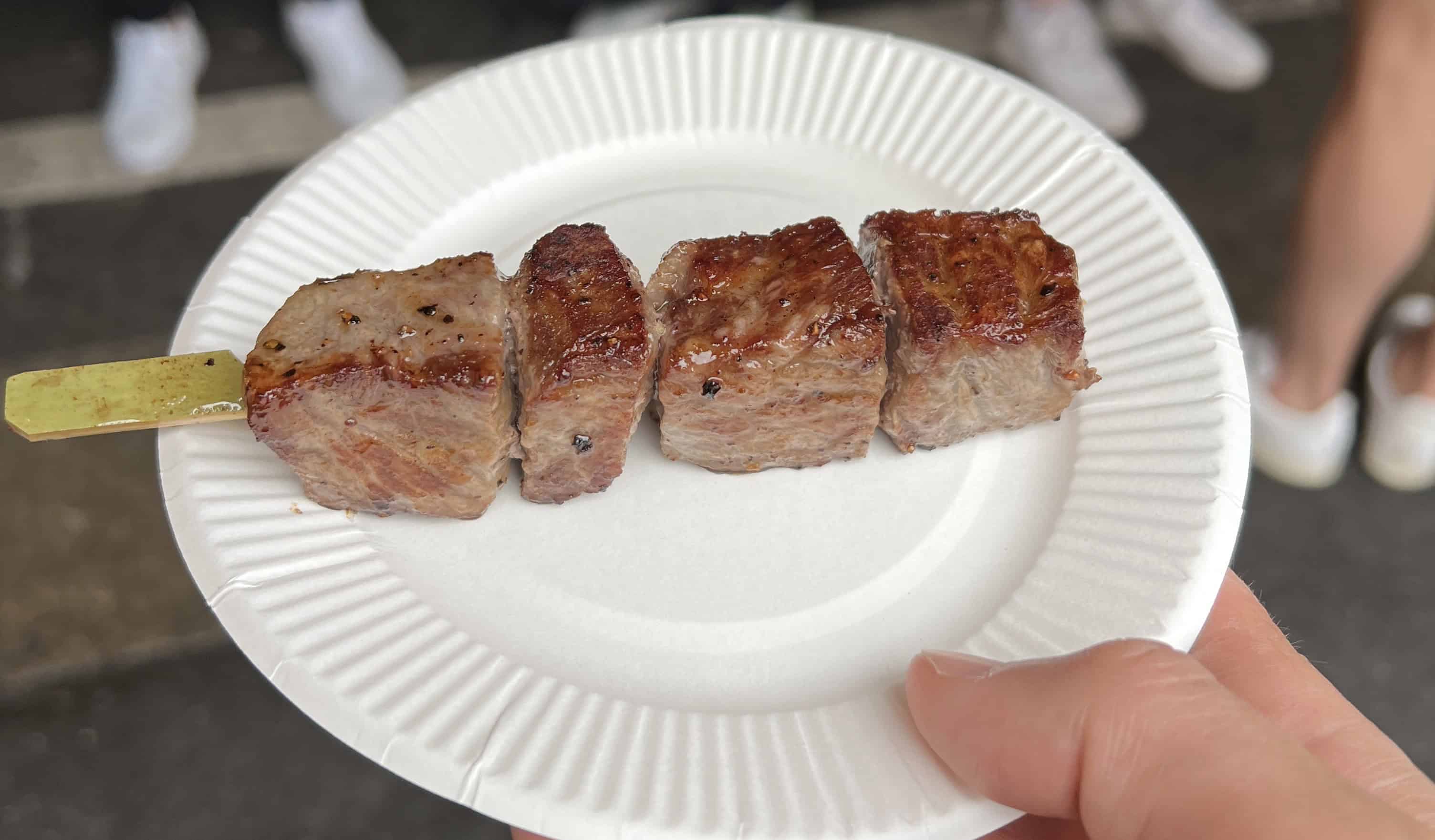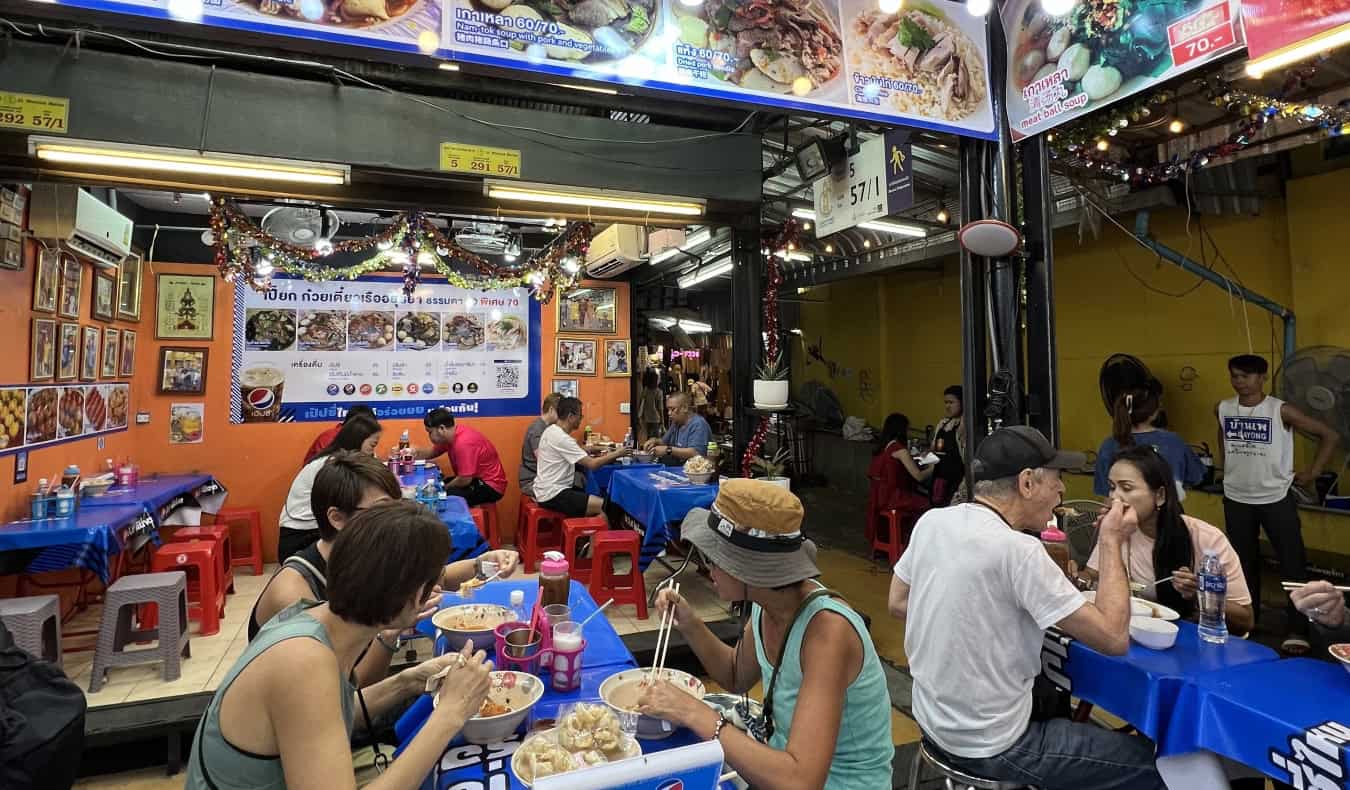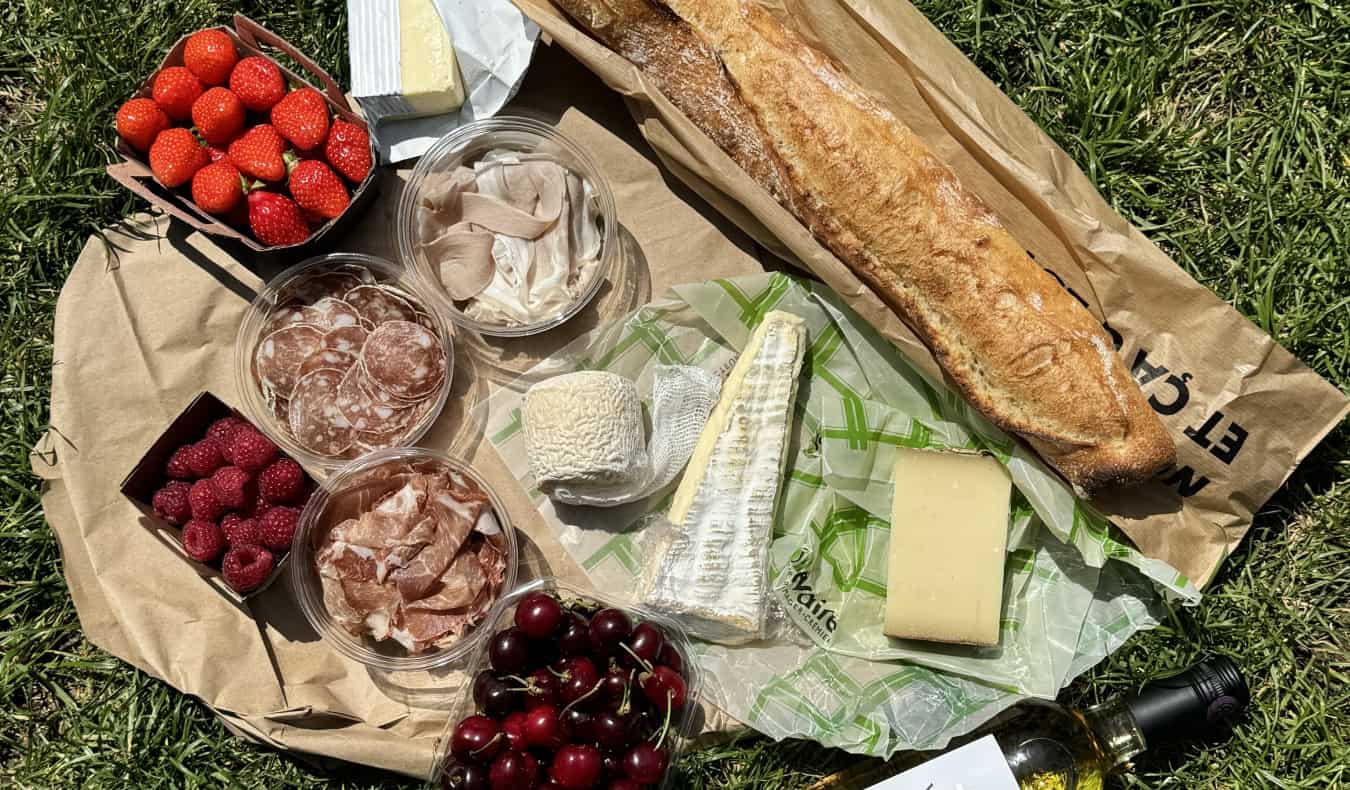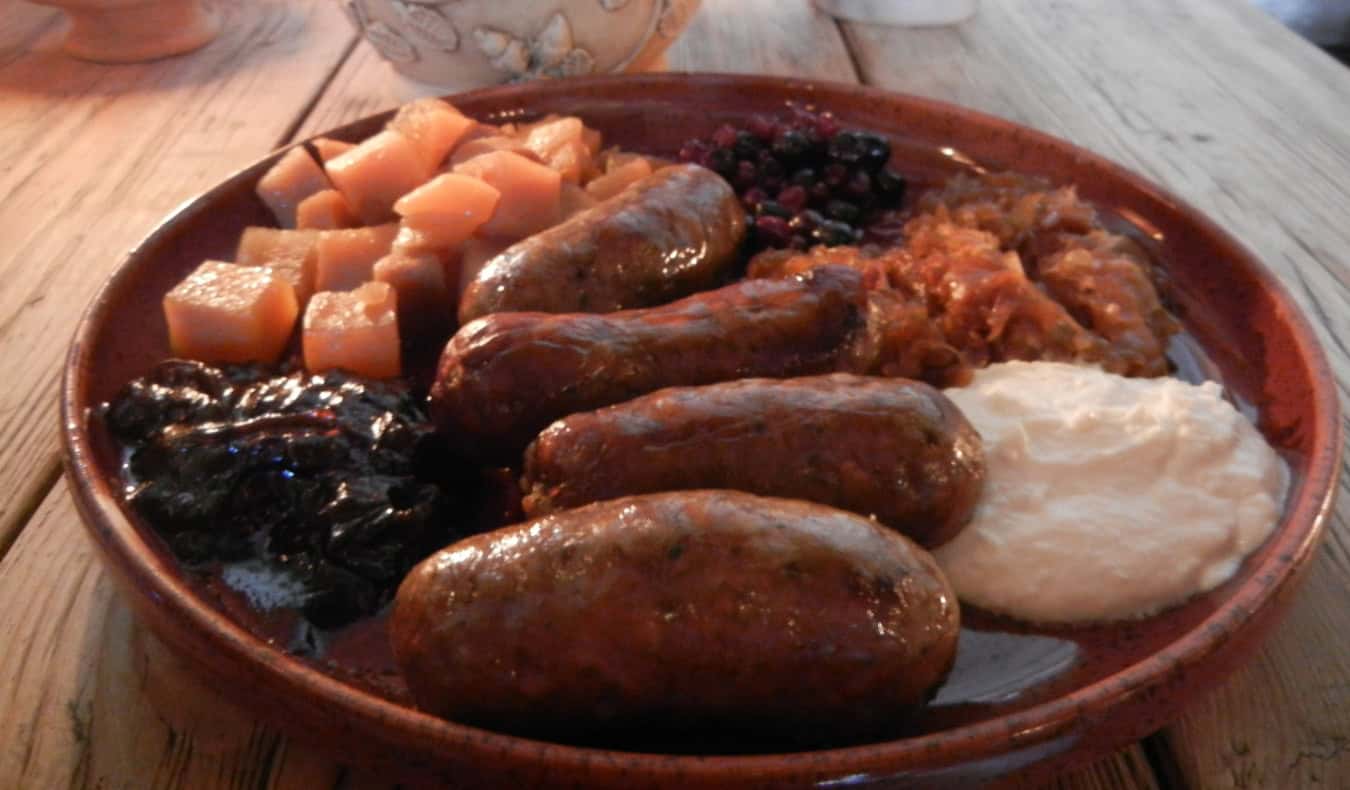
How to Eat Cheaply When Traveling the World (Updated for 2025).
I love to eat.
In fact, eating is one of my favorite activities, and also one of my favorite aspects of traveling.
Food is such an integral part of so many cultures that to skip out on meals when you travel is to miss out on a part of the travel experience.
I’m always disappointed when I meet travelers who cook all their meals in a hostel kitchen or spend so much of their time just getting food at grocery stores.
I mean, don’t get me wrong, grocery stores and markets teach you a lot about a place. You don’t have to eat at restaurants every day. Skip a paella or sushi meal in Spain, or skip a dinner in Japan. Imagine your food budget if you were to eat out every day at home. And, when you are traveling long term (or just on a tight budget), you have to think about making your money last.
Additionally, many people have dietary concerns that prevent them from fully embracing new foods. Many travelers are also vegans or vegetarians, which may limit their choices. How to travel and eat on a budget:
1. Follow the Five Block Rule
I follow what I call “The Five Block Rule”. I never eat within 5 blocks of any major tourist attraction. When I reach five blocks, I walk in any way and look for a restaurant. Tourists don’t cross the invisible line in this area. All of a sudden you notice that the crowds are gone, and that’s when you want to start looking.
Sure, you might find a good meal in a tourist area, but you’ll find a better, cheaper meal outside it. You should choose restaurants where menus are not in different languages. You can try those tiny, hidden places you’re unsure of. The meal might not knock your socks off each time but it will be a memorable and more local experience.
2. Use Local Knowledge
If your are not sure where to eat and don’t want to randomly walk into restaurants, try apps that allow locals to post reviews. They are great for finding recommendations in cities and towns. Ask the staff of your hostel/hotel, the tourist office, or the taxi drivers. They tend to frequent cheaper food stalls. You can get good recommendations from them. Yelp is my favorite app. Happy Cow has vegan and vegetarian suggestions.
3. Ask the Right Question
Ask locals, “Where do I eat?” and not, “Where should you eat?” Most people will send you to popular restaurants that tourists frequent if you ask the second question. The locals will think “Hmmm, where do tourists eat?” What’s popular in town?”
However, by asking where they eat, you will get recommendations for more local restaurants because they will tell you all the hole in the wall spots they eat at on a day-to-day basis. A small word change can have a big impact.
4. Street food
In many places (especially in Asia), you will find little food stalls or areas where the food is prepared on the street. Grab a plate and sit in a plastic chair to enjoy a tasty meal. The best street food comes from vendors and street stalls. Meals at street stalls and vendors cost just a few dollars (if that) most of the time and are a great way to really experience the local cuisine.
While in Sweden, I lived off these types of vendors. In Amsterdam, FEBO’s croquettes and FEBO-branded drinks kept me satiated. In Costa Rica, the empanada seller filled me up for a dollar and I bought local food from vendors at markets for mere pennies in Madagascar.
Many places, like Thailand and Vietnam, for example, wouldn’t be the same if the street food disappeared. (And yes, it’s safe. The locals wouldn’t eat it otherwise.)
5. Eat Fast Food (Sometimes)
Fast food isn’t the best food, but it is another option if you want a cheap meal in inexpensive parts of the world. You can get a very filling meal for as little as $5 USD. In more expensive countries, like Norway (home of the $13 Whopper), the price is higher. Stick to Local Ingredients
When you’ve been traveling for a while, it’s only normal to crave a taste of home every now and then. It’s normal to get sick of Greek cuisine after a while. Sometimes I just can’t take any more Thai food, and want to eat a hamburger. It’s fine. In Vietnam, for example, a bowl pho costs less than $1, while a burger can cost up to three times that amount (or even more). Avoid imported food as it will also increase the cost of your meal. Many restaurants offer specials for lunch, particularly in Europe. These are items from the dinner menu that are discounted. Lunch specials are usually 30-40% cheaper than dinner prices. I prefer to have my “nice” meals at lunch. There are usually fewer options, but they’re worth it. The specials vary from one city to another and even region to region. Ask the staff of your hostel/hotel or the tourist office if they can recommend a restaurant for lunch. They know where to find specials. Bring a Refillable Bottle of Water
As your walk and see the sights, you will need to stay hydrated. It is wasteful to buy a water bottle every day. Instead, carry a refillable water bottle (with a water filter) and use tap water. Lifestraw is a good option. This bottle ensures that your water will always be clean and safe, even if it’s not the tap water.
9. Prepare 50% of your meals.
I do not cook much on the road because I dislike hostel kitchens. When I am in a place for a while (or if I’m Couchsurfing), I cook a few meals. Yet when I am in one place for a while (or if I’m Couchsurfing), I cook a few meals.
Cooking is one of the best ways to keep your travel costs down, and supermarkets are also great places to go see what the local people eat. In Asia, street food is often cheaper. This means that I will be cooking dinner myself. This way I can still try local food while keeping my budget intact. Double win!
10. Have a Picnic
Another good option is to picnic. If the weather is good, I often picnic for lunch. I go to the local market and buy a lot of food. Then, we picnic in a park. This is an excellent way to meet new people if you are staying in a hostel. You’ll make new friends quickly if you invite others to come along. Tourism Cards
Most think that tourist cards such as the iAmsterdam Card or the Oslo Pass are a great way to save on transportation and attractions. These cards offer discounts in many restaurants. The discounts range from 15-25% but can sometimes be as high as 50%. You can save more money by learning about the tourism pass. It’s a worthwhile investment!
12. If you find a hostel or hotel that includes breakfast, then you have already saved the cost of a meal. If you have a large breakfast, you won’t need as many meals. Many hostels offer free meals, coffee, tea and other food related perks. Find them to lower your food expenses and save money.
13. You can find cheap food near universities. Google Maps can help you find nearby post-secondary schools. Many bars in the area will likely have cheap drinks and happy hours too, so you can save even more.
Additionally, use Google to search for places. You can get a lot of ideas by typing “Student Friendly Restaurants in
“. Ask your hotel/hostel about the best places to eat.
14. Supermarket deals are a great way to save money. They usually consist of fresh sandwiches, soups or salads. Many supermarkets offer discounts on food due to expire soon. This includes bread, baked goods and meat. In Japan, for example, they often offer 50% off pre-made food right before closing time because they cannot keep it overnight. Food that is “expired”, especially imported meats, are discounted in Scandinavia. Since food is so expensive, locals tend to buy “expired food” in these countries.
I love to eat at a good restaurant. I’m willing to pay for a great meal and a glass of wine. It’s just too expensive to do that every meal.
But, by using the tips above, I can afford to keep my costs down while still being able to afford a quality meal every so often.
And that’s what is really important — finding the right balance.
Because if you can manage to balance eating great food with saving money, both your wallet and your stomach will thank you.
How to Travel the World on $75 a Day
My New York Times best-selling book to travel will teach you how to master the art of travel so that you’ll get off save money, always find deals, and have a deeper travel experience. It’s your A to Z planning guide that the BBC called the “bible for budget travelers.”
Click here to learn more and start reading it today!
Book Your Trip: Logistical Tips and Tricks
Book Your Flight
Find a cheap flight by using Skyscanner. Skyscanner is my favorite search engine, because it searches all websites and airlines in the world.
Book Your Accommodation
You can book your hostel with Hostelworld. Booking.com is the best option if you don’t want to stay in a hostel. It consistently offers the lowest rates for hotels and guesthouses.
Don’t Forget Travel Insurance
Travel insurance will protect you against illness, injury, theft, and cancellations. This is comprehensive coverage in the event of an accident. My favorite companies that offer the best service and value are:
Want to Travel for Free?
Travel credit cards allow you to earn points that can be redeemed for free flights and accommodation — all without any extra spending. Want to Travel for Free[X]Travel Credit Cards allow you to earn rewards that can be used to redeem for free flights or accommodation. Discover Cars offers affordable international car rentals. They’ll find you the best — and most affordable — rental car for your trip, no matter where you are going!
Need help finding activities for your vacation?
GetYourGuide is a large online marketplace where it’s possible to find cool walking tours and fun excursions as well as skip-the line tickets, private guides and more. Ready to book your trip?
Check my resource page to find the best companies for you to use. Here are all the companies I use to travel. You can’t go far wrong with them. They are top-of-the-line and the best you can get.




